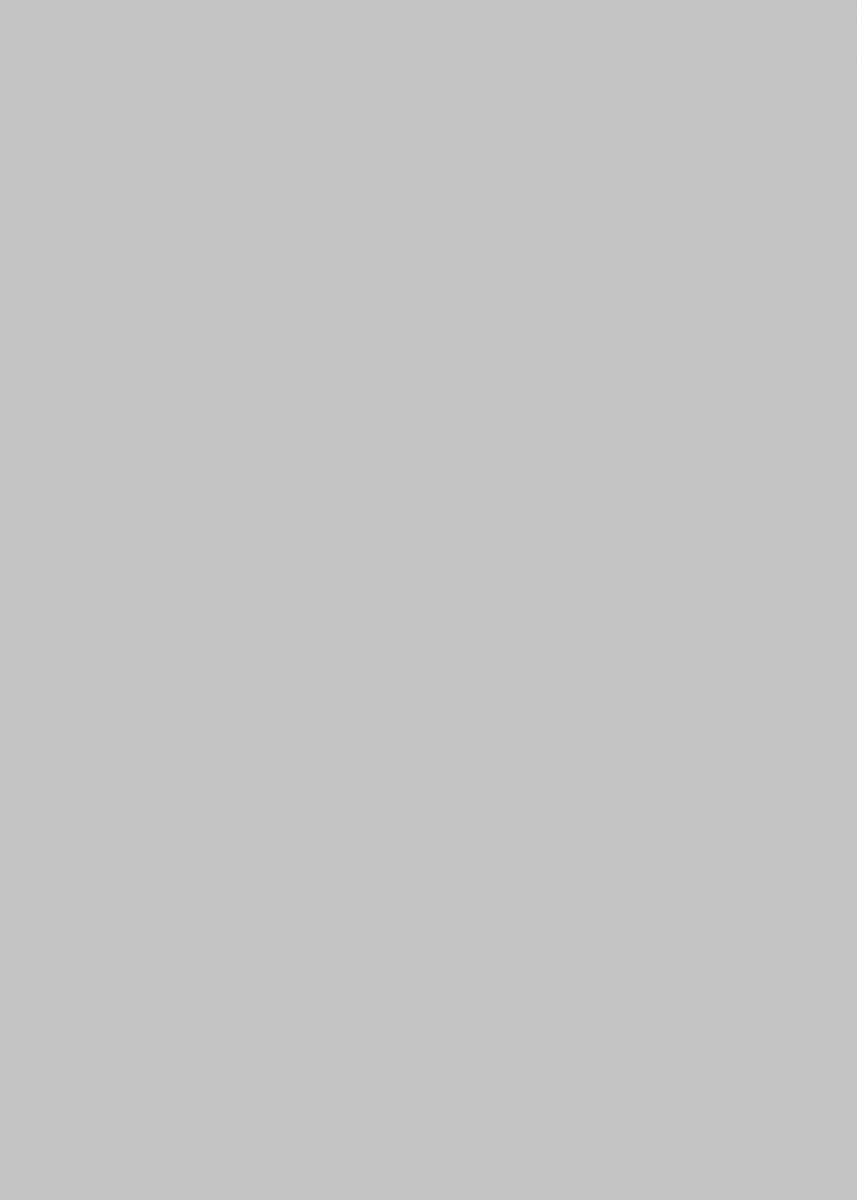27 June –
5 September 2020
The exhibition Untitled (But Loved) consists of international contemporary emerging and mid-career artists and took place at the gallery from 26 June to 5 September 2020. The exhibition brings together paintings and works on paper which deal with depicting the figure and its internal world, mediated by the processes and the techniques through which the works were brought into being.
This is the second exhibition at the gallery in 2020 due to Covid-19, which has come together with artists and galleries we have been having long standing conversations with over the years. Although not originally part of the gallery’s planned exhibition programme, which will resume in September 2020, this exhibition has an intimate selection of artists which we are very excited to be working with and it is a silver lining that has arisen out of this global pandemic.
Untitled (But Loved) includes work by Hayley Barker, Lindsay Burke, Isa Carrillo, Joe Cheetham, Neil Haas, Heidi Hahn, Ellie MacGarry, Mickael Marman, Bridget Mullen, Kemi Onabule, Jack Sutherland, Aleksandra Waliszewska & Ella Walker.
Invite

What instantly compels the viewer in Hayley Barker’s oil paintings is colour: radioactive colour admiring the atomic sherbet and chemical-leak lime. She employs a pastel palette with flourishes of neon; these electric hues enlivening idyllic scenes from our art historical repertoire plunge us into anachronisms—what could be a field for Roman goddesses is now rendered with colours that remind us of the byproduct hues from labs and factories, from man’s clever creation-as-destruction—deadly, poisonous and alluring. Barker is intent on capturing the chaos of integrating both painful experience, and the illumination born of inner work and spiritual practice. The painting River 3, 2020 features a nude female figure in the foreground, embodied with intense feminine anxiety, and seated on the trunk of a tree at the water’s edge; the rest of the work is distant cliffs, waves, – a Romantic’s Eden. The figure has her arms up, to precariously rest her elbows, a diaphanous robe slipping down across her lap; her gaze is demure as her head turns down fixed on her one foot dangling just above the water’s surface. The combination signifies the Classical woman—nude, posed for viewing, in nature—and yet, what prevents her from sliding down the rock if not tight muscles, hyper-vigilance, or the cleverest detail of all, the figure’s finger poking into the side of the tree? – Julie Schulte, Artillery Magazine, May 2020.
Hayley Barker (b.1973, Oregon) lives and works in Los Angeles. She received her BA from the University of Oregon, and her MA & MFA in Intermedia from the University of Iowa. She has recently had her work featured at BOZOMAG (LA), La Loma Projects (LA), The Glendale Biennial curated by the Pit at the Brand Library & The Divine Joke, curated by Barry Schwabsky at Anita Rogers Gallery (NYC). She has a solo exhibition at SHRINE (NYC) this Autumn.

Lindsay Burke’s work questions the value of an image in the hastily evolving contemporary visual culture. Traditional images, similar to those preserved in classical frescoes and relief sculptures, are layered and repeated, evoking digital screen culture and the accumulation of content. She focuses on the female experience, gender-based power dynamics and sexuality but also thinks about the human potential for emotion, creation, destruction, violence, pain, and desire. In her works she chooses tableaus for the body to engage with: clocks, wheels, gears, fans; all rotational objects. She poses the question of whether the body exists within the machine or if the machine drives within. The work in the exhibition was an abstracted image of lungs relating to the idea of toxic intake/output. The artist began to think about what we breathe in and out earlier this year both literally and metaphorically: toxic air, toxic thoughts, toxic behaviours. For the past five years she has made work using an airbrush, protecting herself with a mask. Overtime she began to be haunted by the image of caution featured directly on the mask. This imagery has taken on a whole new meaning with the outbreak of a respiratory virus in 2020.
Lindsay Burke (b. Ames, Iowa, 1991) lives and works in New York. She received her B.F.A from the University of Iowa in 2014 and her M.F.A from Hunter College in 2017. In 2016 she attended the Skowhegan School of Painting and Sculpture in Maine and was a participant in the Shandaken Paint School Residency in 2018. Recent exhibitions include a solo show at Marinaro Gallery in New York and group exhibitions at Martos Gallery, New York; Art Los Angeles Contemporary, LA; Thierry Goldberg Gallery, New York; The Flag Art Foundation, New York; Underdonk Gallery, Brooklyn; George Gallery, Brooklyn; Helena Anrather Gallery, New York. She is represented by Marinaro Gallery in New York.

Isa Carrillo’s artistic production is profoundly influenced by notions of mysticism. She explores graphology, palmistry, astrology and numerology, which become the tools she uses to capture the experiences of her subjects. Her work explores the hidden and enigmatic aspects of the collective subconscious and provides a connection to a critical and empirical vision of pseudoscience applied to individuals. Carrillo’s embroidered portraits represent the expression of a personality from the point of view of numerology and the electromagnetic field. The work presented in this exhibition titled Electromagnetic Field (Edith Stein), 2019 is a portrait of the philosopher Edith Stein, and part of a series of eleven portraits of women from history who have an energetic resonance with Regina, a Mexican woman known as Dakini in Tibet, who died on 2 October in 1968 in Tlatelolco, her mission was to contribute to feminine consciousness awakening. By using numerology, Carrillo proposes to reinterpret the stories of these women through geometric patterns, thus constructing a connection between different characters and events through time. The numerology is known as Pythagorean-Alchemist-Jungian and is based on the date of birth, month, day and year, reduced to one digit. From these three numbers a total of seventeen numbers appear that correspond to the specific aspect of the conscious, unconscious, subconscious and superconscious. In this way she obtains four different stages of a person’s life: aptitudes, obstacles, mother and father figures, as well as other issues that will be present throughout their life. The numbers are understood as specific vibrations that reflect a particular quality, and depending on where they are placed, can reflect a positive or negative polarity in the particular tendencies of the individual, exposing the layers of their personalities.
Isa Carrillo (b. 1982, Guadalajara, Mexico) lives and works in Mexico. She received her BA in Visual Arts from Guadalajara University in Mexico in 2005. She has exhibited in institutions such as Museo de Arte de Zapopan, Museo Taller Clemente Orozco, Museo de Arte Raúl Anguiano, Centro Cultural de Arte Moderno in Guadalajara, Museo Diego Rivera Anahuacalli, Mexico City, and Museo de Pintores in Oaxaca, Mexico. In Giorgio Cini Foundation, Venice, Italy, Cuadro22, Chur, Switzerland, Bass Museum of Art in Miami, Pomona College Art Museum, Claremont, United States and Bessarabska Square, Kiev Ukraine, among others.

The two works in the exhibition are from Joe Cheetham’s Step On, 2020 series highlighting the Glasgow-based artist’s ongoing interest in the complex legacy of rave culture. The new pencil studies on view here expand into a body of work that encompasses large spray-painted canvases, collaged installations and murals. In Cheetham’s Step On series, an ever-expanding cast of revellers replete with party detritus and dress, exuberantly printed textiles and billowing blunts recall the promise of hippy peaceniks and acid house ravers past. Merging the crass cartooning of Viz Magazine with the tacky positivity of club culture, Cheetham’s figures are sincere in celebrating their own tastelessness, revelling in the romanticism of the big night out. Yet as easily a blissed-out gurn becomes an exhausted grimace, the hedonism of the night must meet the desolation of the morning after – inevitable feelings of loss and cultural exhaustion evidenced in baggy jeans and smiley faced tropes. Whether Cheetham’s character’s unified move is to sunset or sunrise, it doesn’t matter; parties are backwards, anyway. They start at the end of the night and end at the start of a day. Despair is the other side of euphoria. What goes up must come down. What goes down can stay there. With detached limbs and wide eyes Cheetham’s work reminds us that joy is corporeal, the fullness of a nightclub can help to empty our head as we move our bodies as one.
Joe Cheetham (b. 1992, Epsom, UK) lives and works in Glasgow. Joe Cheetham’s practice focuses on painting and its expanded installation, incorporating gestural mark making and an exotic colour palate in the production of abstract and figurative works, Cheetham draws heavily on a range of influences from rave flyers, club culture and underground cartoons. Solo exhibitions include: Can you feel it? TACO!, London (2019); Such a good feeling, Jackob Kroon Gallery, Worthing (2019) and Joe Cheetham, Trade Gallery, Nottingham. Group exhibitions include: Full English, Platform Southwark (curated by Dateagle Art, 2019); Sinkhole Project, London (curated by Ginny Projects, 2018); Wherever you Land, Slugtown, Newcastle (2018); Welcome to Suede, Suede Gallery, Edinburgh (2016); No Bad Wednesdays, Voidoid Archive, Glasgow (in collaboration with Embassy Gallery, Edinburgh, 2016) and Interim, Talbot Rice Gallery, Edinburgh (2016).

Neil Haas works across painting, sculpture, textiles and performance. His work explores the intimacies of queer experience through portraiture and the focus on the male figure. The young men in Neil Haas’s works are unknown to the artist, sourced from men’s fashion and lifestyle magazines or taken from the internet. Haas spent his younger years in the small Northern town of South Shields, where he acknowledges a familiar story of experiencing a kind of freedom from looking at fashion magazines, which he saw as a window to another world. Haas equated the handsome looks of the young men within the covers to a happiness and desire formed from particular ideals of masculinity. The drawing on the Venetian blind titled Draco Edge of the Forest, 2020 relates to the character in the Harry Potter novels. The figure gazes into an unseen distance, wearing an enchanted overcoat that reflects what’s on the inside so it both hides and reveals him. In the original stories we encounter him as a bully, a one-dimensional mean boy, but Haas reimagines him growing up into a sensitive and compassionate young man struggling to reconcile the conflicts inside. The works titled Summit Drive, Easy with You and Night Vision all from 2020 are painted on bathroom tiles, a series begun in 2018 at the artist’s parent’s house, taking images from magazines as the starting point. Summit Drive is inspired by the feeling of California, Haas picked up as a teenager from films, magazines, postcards of David Hockney’s Canyon paintings, and a nostalgia for a place he’s never been. The couple, like a lot of the people he paints, stand in for something we think we want. Night Vision is the idea of walking around alone at night, familiar details of the city taking on subtle meaning and becoming personal. It could be anywhere a beautiful stranger drifts past or crosses the street in front of you, always out of reach. The coloured pencil marks came last, like a map made from memory. To Haas the people in Easy with You feel like the perfect couple he was always jealous of when he was young. He still sees them around, a kind of projected ideal that life (happily) exposes as another mirage.
Neil Haas (b. 1971, South Shields) lives and works in London and South Shields. He completed his MA in Painting at the Royal College of Art in 2014. Exhibitions include Crocodile Tears, Unit 17, Vancouver, (2020); Young Monsters, Lychee One, London, (2019); Fleurs Dans La Pluie, Musée Estrine à Saint-Rémy-de-Provence; Neil Haas & Patrick Procktor, the Approach, London; Kids Use Laptops, Union Gallery, London, (all 2018) & Spunky Clipper, Almanac, London, in 2017.

Heihi Hahn’s sumptuously atmospheric and layered use of paint, in conversation with art historical traditions, draws the viewer into a psychological space that evokes our attachment to the female form and how it is processed through traditional and contemporary readings of the male gaze. Her female figures appear at once distant from the viewer, free from the gaze, absorbed in the banality of inaction, and at the same time relatable and accessible. Gestural, fluid, and spectral, Heidi Hahn’s works reframe and re-contextualise her subjects, exploring the ambiguous and shifting boundaries between public and private spheres. The work on paper Untitled, (But Loved) 1 is part of a series by Heidi Hahn titled Untitled (But Loved) 1 – 7, 2015 – 2019 which was started on Fischers Island, off the coast of Connecticut at the residency Lighthouse Works in 2015, continued during the summer of 2019 at MacDowell, a residency in New Hampshire, USA and competed recently at her studio in Brooklyn, New York. The artist’s titles are usually an umbrella to a whole series of works, by giving them the same title and just numbering them, she is suggesting that the title is arbitrary to the experience of the works themselves. In the series of seven works, the figures are set loosely against rendered backgrounds that hint at a site within what is largely an abstract surface. This ambiguity is intentional and evidences the artist’s refusal of specificity, confusion of temporalities, bodies and interior/exterior spaces. The women pictured suggest symbolic figures and seem to be in fleeting mental states. Awash with pattern and dynamic treatment of colour to reflect this, Hahn made subtle changes to the works over time, embedding the story individually in each one, but they all come together as an animation of sorts, each a suggestion or a residue of feeling preserved over time.
Heidi Hahn (b.1982, Los Angeles) lives and works in New York. She is a painter known for her vibrant palette, melting figures, and atmospheric moods. She received her BA in Fine Art from Cooper Union in 2006, and her MFA from Yale University in 2014. Hahn is an acting Professor of Painting and Drawing at Alfred University, NY, and has been the recipient of several awards, residencies, and fellowships, including the Jerome Foundation Grant, Skowhegan School of Painting and Sculpture Residency, Madison, ME. She has exhibited nationally and internationally in numerous group and solo shows, including an exhibition at the Nerman Museum of Contemporary Art, KS, in 2018 and an exhibition at the LSU Museum of Art, LA, in 2019. Hahn has been awarded several residencies and awards, including the Skowhegan School of Painting and Sculpture and a Jerome Foundation for the Arts Grant. Her work has also been reviewed in numerous publications, including The New York Times and Hyperallergic.

Ellie MacGarry’s work considers the self-conscious body on the brink of exposure; the inside and out, the clothing and unclothing – exploring the desperate desire to be seen and the even more desperate desire to be hidden. From details of tender introspective moments, to imagined garments or protective coverings, the intimacy and the theatre of the everyday is put at centre-stage. Focusing on areas or moments which are ordinarily unseen, these fleeting private moments are often paused at a point of transition – shirt half-unbuttoned, haircut not yet complete, or crumpled slept-in bedsheets. MacGarry surveys the environment of the bed in a development of her interest in public/private space, envisaging the bed as a private island designed for our bodies. In the painting Cave, 2019 she was thinking about the bed as a place of retreat or shelter, a ‘cave’ made of a soft duvet, doming over the body below, and lit from within. Each painting acts as a frame for this self-conscious body, or for the spaces that it might inhabit; forms are flattened and bodies are stretched out. An interest in the unseen also manifests in the use of crops or details – by cropping something at a point of continuation it allows for the imagination of the viewer to expand beyond the constraints of the painting. Her paintings are sometimes accompanied by ceramic sculptures pretending to be used tools – clogged up and haggard, like those found in the back of a bathroom cupboard, and usually hidden from the eyes of others.
Ellie MacGarry (b. 1991, Cambridge) lives and works in London. She has a BA in Fine Art from the University of Leeds and an MFA in painting at the Slade School of Fine Art. After graduating from the Slade in 2018 she undertook a residency at the Academy of Visual Arts in Hong Kong. Recent exhibitions include Come Undone, Daniel Benjamin Gallery (2019), I know that you knowm, Wells Projects (2019), and In Hiding, Academy of Visual Arts Gallery, Hong Kong (2018).

In this recent body of work Mickael Marman departs from landscape watercolours on paper while travelling through the Costa Chica region of Oaxaca, Mexico in 2019.This particular district is one of the very few places in Mexico where the very marginalized Afro-Mexican culture has a strong threshold. Due to Marman’s geographical background (Norwegian / Gambian) the African diaspora is a significant point of interest in the artist’s research and body of work. The watercolours peddle between figuration and abstraction and in some of these works a figure that appears to be the artist himself surfaced over a beach alleged landscape. Found material such as stone and wood hint reference to landscape painting directly in an expansion outside the painting itself and gives the medium a more sculptural appearance. How a location can be depicted, captured or framed in any recognizable quality is brought into question of a temporal subject and a speculative history of material.
Mickael Marman (b. 1983, Norway) lives and works in Berlin and Oslo. He graduated in 2017 from Staedelschule, Frankfurt and before that he studied at HFBK in Hamburg under Jutta Koether. Recent solo/duo projects at Artissima Torino (Damien & The Love Guru 2019); Sangt Hipolyt, Berlin (2018)l Neuer Essener Kunstverein, Essen (2018); Ruisdaelstipendium, Bad Bentheim and Jacky Strenz Gallery in Frankfurt am Main. Group exhibitions include Lit Naits QB Gallery Oslo, BPA at Beach Office, PS120, Berlin (2019); Rudiger Schüttle Galerie, Munich (2017); MMK, Frankfurt (2017). Marman was also a participant of The Berlin program for artists in 2017-2018. Marman has an upcoming solo exhibition at Damien & The Love Guru, Brussels this Summer 2020

For New York-based artist Bridget Mullen, painting takes place as a mixture of intuition, inventiveness and random occurrence. Her paintings are built up, layered and worked at over long periods of time, exploring a vast array of mediums and techniques. As such, her paintings are not ends in themselves, but are spaces which contain the entire temporality of their making, a means towards inhabiting the process by which they were brought into being and the consciousness of the maker. For Mullen the encounter between the viewer and the painting is what allows for the work’s coming into being, the painting “requires your standing before it to complete it.” Her paintings are dreamlike, cartoonish, brushed by unsettling elements of the surreal. She makes abstract works then repurposes the abstractions as figures. This reversal of logic produces melodic and dissonant passages frozen in the moment of becoming or fading away. When predetermining a painting seems too direct, too much like language, her process taps into irrational and referential registers that produce in the painting fluid thresholds between forms sparring for clarity and figures striving to relate. The movement, gesture, a series of moments or metaphysical potentialities all existing concurrently transcending the time and space. The work on paper exhibited in this exhibition is from a body of work about the nuances of physical and metaphysical thresholds. In her work titled Recalibrate, 2020 Bridget Mullen painted a wallpaper-like background, where forms are repeated, bleeding off the edge, to suggest an infinite space. This painting was completed during the summer of 2020 during the pandemic. It depicts repeated dandelions, the most resilient of weeds, the title reminiscent of how adaptable the plants, and we can be.
Bridget Mullen (b. 1976, Minnesota) lives and works in New York. She holds an MFA from Massachusetts College of Art. She has been awarded residencies at MacDowell, The Jan Van Eyck Academie, Skowhegan School of Painting and Sculpture, The Fine Arts Work Center, and Yaddo among others. Her recent solo exhibitions include Helena Anrather, New York, NY; Annet Gelink, Amsterdam, Netherlands; and recent group exhibitions include Wild Palms, Düsseldorf, Germany; DC Moore, New York, NY; Thierry Goldberg, New York, NY; and Fahrenheit Madrid, Madrid, Spain. Her work is in the collections of the Museum Boijmans Van Beuningen in Rotterdam, Netherlands and the Anderson Museum of Contemporary Art in Roswell, NM. She was awarded studio space from the Sharpe-Walentas Studio Program in New York from 2017-2018 and participated in the Shandaken Paint School from 2018-2019. Her work has been featured in Juxtapoz, Maake Magazine, and ArtMaze.

Kemi Onabule is a painter and printmaker, her work has a particular focus on the human relationship to the natural world, looking to the past and to other cultures to understand our place in the cosmos. She has found that by looking at non-western ideas around nature, environmental issues and the body we might find the way forward. The work is often a depiction of human beings in a natural setting stripped of any capitalistic identifiers. She places the body in its original habitat. The tangled bodies in the painting Over and Under, 2018 represent the sometimes fraught interpersonal relationships we can have with those closest to us. The figures could be holding one another down or lifting one another up. The patterns that cover the bodies could be camouflage in order to blend into a hostile environment. The artist is heavily influenced by her multicultural upbringing, having grown up with a Nigerian father and a Greek-English mother coupled with the rural setting of her education and family home she was often exposed to ways of being that were different to many of her peers. She uses this unusual perspective within the work by using images from traditional Ifa religion, specific to the Yoruba people of Nigeria and the Island cultures of the Greek archipelago, cultures that are both deeply linked to the land alongside each have deep artistic traditions. Onabule’s work is an invocation of all these influences in order to draw the eyes of the viewer to the past and present.
Kemi Onabule (b.1995, UK) lives and works in London. She graduated with a BA in Painting from the Wimbledon College of Art in 2016. Exhibitions include: The Catch Feelings, I Catch Bodies, Sim Smith Gallery, London (2020); Autumn Exhibition, Thompson Gallery, London (2016); Clyde and Co Art Award (2016). She was shortlisted for the Hix Award in 2017 and the Ingram Young Artist Prize in 2017.

Jack Sutherland’s vivid paintings rendered in surreal colours are about the human condition: frustrating, humorous, nihilistic, silly moments taking place within the theatre of the absurd. Explorations of bodily anxiety and trepidation are paired with a fizzing and playful use of colour to create work that prods at the soft underbelly of the uncanny. Cartoonish bodily abstraction, wordplay, cropping as a compositional tool, and vulnerability are all given high precedence within the paintings, with scale being used to either intensify or undercut the imagery. Maps are a recurring feature in Sutherland’s work, used to find something, or find yourself; to go from Point A to Point B; to depict borders and boundaries, whether they are a reflection of the real world or not; they are fragmented abstract shapes that force legibility to the outer edges of the painting. A map will often be the starting point for a painting in these recent works; the papery edge is drawn out, with folds and creases exaggerated for visual impact. The map is a bang. A burst of knowledge. The map’s edge is the teeth of a saw’s blade. Once this element of the painting is rendered, the remaining space is occupied with bodies interacting with this central key. Frequently the viewer is able to see things within the painting that the figure within cannot see; hidden knowledge forever withheld from our tormented protagonist. We can see from the way the paper folds that the surface of the map from the figure’s point of view is black and white, whereas from our perspective the slightly translucent surface reveals itself to be glorious technicolour. The painting in this exhibition titled Fixed Position, 2020 speaks to feeling stuck and looking for a solution to the stickiness, or possibly being unaware of the tool that you’re using to locate yourself may be the thing that is keeping you in a fixed position.
Jack Sutherland (b.1989, Southend-on-Sea) lives and works in London. He received his BA in Fine Art from the University of Creative Arts, Canterbury and his MFA in Fine Art from the Slade School of Fine Art, London in 2019. Selected exhibitions include: Bloomberg New Contemporaries, South London Gallery, London, (2019); A Raw Garden, Fitzrovia Gallery, London, (2019); The Field, ASC Gallery, London, (2018); Footfall Art, Walthamstow Window Gallery, London, (2017); Fleeting Affiliations, Lily Brooke Gallery, London, (2017).

Aleksandra Waliszewska’s “nasty children” and “fantastic animals” invade the works with their morbid figures and jarring symbolism as she creates a new Gothic style that meshes surrealist imagery, medieval mystery, horrors and eroticism with perverse fairy tales. The three works in the exhibition titled Untitled, 2012 – 2014 are testament to that. She explores non-contemporary sources: in recent years, the artist has repeatedly returned to the themes of oppression, torture, sexual subjugation and bestiality, both in the sense of hybrid species and bloodthirsty behaviour. Her subjects have an primitive, androgynous air – a young woman’s waif-like body could easily be that of a nubile adolescent male. The worlds of fairy tales and S&M collide, creating a sort of magical perversion that is both intriguing and disconcerting. The victims – less frequently than the perpetrators – are women, at the mercy of humanoid beasts and sadistic men. Waliszewska’s monumental opus is a morality tale for our time, one splintered into thousands of chapters, which, as the artist ironically put it, talking to Maurizio Cattelan. is a ‘warning against evil before the time of joy and sweetness comes.’
Aleksandra Waliszewska (b. 1976, Warsaw) lives and works in Warsaw. She is a graduate of the Academy of Fine Arts in Warsaw and recipient of scholarships awarded by the Polish Ministry of Culture and National Heritage. Over the past decade, she has had more than 20 solo exhibitions in Poland and abroad, including at Leto in Warsaw and Jerke Museum in Germany. She is collaborating with the international art group Frederic on exhibitions in Paris and presenting her work in collections published by My Dance The Skull, United Dead Artists, Les Editions Du 57, Drippy Bone Books, Editions Kaugummi. She also writes screenplays and appears in films, such as The Capsule (2012) and Dog Days (2019).

Ella Walker’s practice combines painting, drawing and fresco like mural installations, utilising various media including tempera, acrylic and ink. Inspired by medieval narrative and symbolism, her works often directly reference medieval iconography. The two small paintings on paper in the exhibition are tantamount to the artist’s interest in medieval mystery, ceremonial play, pre-Roman sculpture and Celtic art. The work titled To tread the ooze of the salt deep, 2020 is inspired by Shakespeare’s The Tempest, Act 1 Scene 2 where Prospero rebukes Ariel and orders him to disguise himself as an invisible sea nymph. This Act imagines ‘art’ (magic), ‘grand hests’ (repulsive orders), and ‘sorceries terrible’ (spells) performed by the foul witch Sycorax who, enraged by Ariel’s refusal to obey her, imprisoned him inside a tree, where he suffered agony for twelve years. Within the painting there are symbols which represent ideas: Specifically, Anemones, show protection against evil (the petals close before rainstorm) and the Waterloo Helmet (a pre-Roman Celtic ceremonial horned helmet) represents a votive offering. In the painting Torso of Aphrodite, 2020 the artist has taken on the theme of the goddess of love and beauty, Aphrodite; born of sea foam. The main figure in the painting is drawn from the archetype, the statue Aphrodite Pontia-Euploia which was characterised by sculptor Praxiteles in the fourth-century BC. The artist has a reproduction of this sculpture in a book called Hellenistic Art which she keeps in her studio. The cosmic shape in the top left part of the image mirrors a navigation motif found in The Fall of Lucifer a 15th century Illuminated manuscript (Florence, BR 215, fol.IIIv) and symbolizes the goddess as guardian of sea voyages; an emblem of female sexuality.
Ella Walker (b.1993 in Manchester) lives and works in London. She studied at the Glasgow School of Art, graduating in 2015, and at the Royal Drawing School, graduating in 2018. She has exhibited at Cob Gallery, London (2020); Huxley-Parlour Gallery, London (2020); FBA Futures, Mall Galleries, London (2020); Palazzo Monti, Brescia curated by Katy Hessel (2019), Embassy Gallery, Edinburgh (2018).


